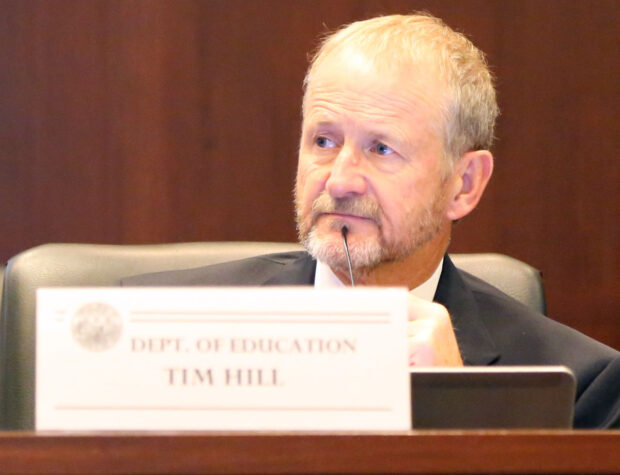If Idaho lawmakers change the state’s public school funding formula, they will also need a new set of rules or laws to ensure student enrollment is calculated accurately.
That’s because the way the state currently counts and reports enrollment doesn’t differentiate between full-time enrollment and fractional enrollment, or fully address student mobility and other facets of today’s 21stcentury educational landscape.
In order to determine precise enrollment levels, fund schools accurately and protect taxpayer dollars, data collection will need to change.

“It will require — for the state to effectively and equitably fund each district or charter — that we have to identify not only fractional enrollment, but full-time enrollment,” said Tim Hill the State Department of Education’s deputy superintendent for public school finance. “I fully expect that, we don’t have a choice.”
The validity and accuracy of enrollment data is increasingly important as state leaders consider whether to transition from the current attendance-based funding model to an enrollment-based funding model.
The state’s current funding formula was written in 1994, and pre-dates many aspects of our modern school system, including online learning, the proliferation of charter schools, student mobility and fractional enrollment. Modernizing the system is another reason advocates say the existing formula is due for an overhaul.
A good example of how fractional enrollment comes into play can be found in the Emmett School District. The SDE reported Emmett’s K-12 enrollment in November was 2,619, plus 23 additional pre-K students. However, when you add up the total enrollment at each school building in Emmett, that total comes to 3,233. The biggest reason for the discrepancy has to do with Payette River Technical Academy, which reported an enrollment of 595 students. Emmett Superintendent Wayne Rush said almost every one of those students attends only a class or two at the technical school. Those students predominantly attend Emmett High for the bulk of their classes, but the same students are counted as enrolled in both schools under the current system.
That would need to change under a new funding formula so those students aren’t double-funded on the taxpayers’ dime.
“The move to enrollment from ADA can be done, it’s just a matter of creating rules around that so we know how to handle it,” Rush told Idaho Education News. “Payette River Technical Academy is a really good example of why we need good rules around how you count students.”
Although students’ ability to take classes at both Emmett High and Payette River Technical addresses the bulk of the discrepancy, the numbers still don’t align exactly.
When you subtract Payette River’s 595 students from the building-by-building enrollment total, there is still a difference of four students when compared to the districtwide enrollment total.
“I ran them a couple of times, the numbers and couldn’t get them to come out right,” Rush said. “I’m not sure on the difference — I think it’s four students — why that would be.”
State Department of Education officials say they are in the process of verifying and correcting errors and will produce more accurate enrollment numbers later this month or by early January.
The difference of four students in Emmett today won’t affect funding levels, which are still predominantly driven by average daily attendance. However, if lawmakers change to a new enrollment formula, every student that is miscounted would either cost the school district or the taxpayers $4,287 if the latest funding formula proposal is signed into law.
“Any misstatement of enrollment going forward would have the same effect as any misstatement of ADA currently,” Hill said, adding the state now has three years to correct ADA mistakes under state law.
In changing funding models, the Legislature likely would need to make other changes as well. That includes defining and calculating the funding “weights” that would be applied to a new funding formula and defining economically disadvantaged or at-risk students.
Even with substantial changes ahead, Hill said he has faith that the state is up to the task of tracking, calculating and reporting enrollment accurately.
“Even not knowing what (the final formula) will look like, I can say I have a very high confidence level,” Hill said. “I know full well our team is going to do what it is asked to do.”
